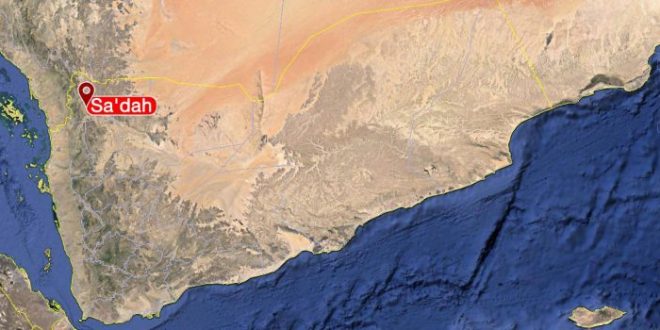Two Injured in Saadah Due to Saudi Aggression and Explosive Remnants
According to Almasirah correspondent, a civilian was wounded by Saudi gunfire near the Al-Sheikh area in Monabbih district, a border region that has repeatedly witnessed attacks targeting Yemeni civilians.
In another tragic incident, a child was injured when an explosive remnant of war detonated in the Fahlwain area of Kitaf and Al-Buqa’ district. The explosion highlights the ongoing dangers posed by unexploded ordnance left behind by the conflict, which continues to threaten the lives of innocent civilians, particularly children.
Humanitarian organizations have repeatedly called for urgent action to clear explosive remnants and protect civilian populations, but the suffering persists amid ongoing hostilities and a lack of international intervention.
In a recent report for the Executive Center for Mine Action, at least 228 individuals were killed and injured due to mines, cluster bombs, and remnants of the US-Saudi aggression during the year 2024.
A report issued by the center revealed that the remnants of the aggression led to the martyrdom of 66 individuals, the injury of 162, most of whom were children. The governorates of Hodeidah, Sana’a, and Al-Jawf were the most affected in terms of the number of casualties.
It pointed out that, simultaneously with this large number of documented and verified casualties, the Executive Center for Mine Action has been nearly inactive since the transfer of the mine-related activities and file to the Office of the Humanitarian Coordinator in Yemen in June 2023.
The center clarified that no support has been provided for mine-related activities by the Office of the Humanitarian Coordinator in Yemen, despite the establishment of the Humanitarian Needs and Response Plan for the year 2024.
The center called on the UN Humanitarian Coordinator in Yemen and humanitarian partners to take responsibility for designating one of the UN agencies to manage, support the removal of mines, cluster bombs, and war remnants for humanitarian purposes, in order to protect, save civilian lives in accordance with humanitarian law, international agreements, and protocols. It also urged them to provide support to the National Mine Action Committee and its executive body during the year 2025.
The US-Saudi aggression coalition dropped millions of tons of munitions on various Yemeni governorates during the years of aggression, while its mercenaries on the ground contaminated vast areas of Yemeni land with mines. These unexploded munitions, particularly cluster bombs and mines, pose a danger to humans, with the majority of their victims being children.
Various regions across Yemen’s governorates have been subjected to bombardment by the US-Saudi aggression using cluster bombs. Many of these internationally prohibited munitions still pose threats, scattered among farms and roads, leading to dozens of victims.
The toll of cluster bomb victims has exceeded 25,000 civilians since the onset of the US-Saudi aggression against Yemen. Landmines and remnants left by aggressive forces during their occupation continue to endanger residents, particularly in farming areas and along roads.

